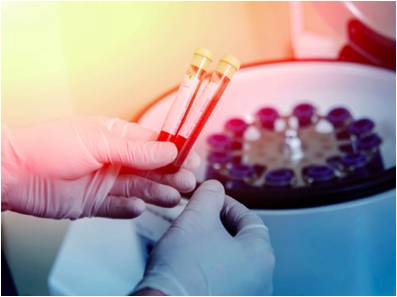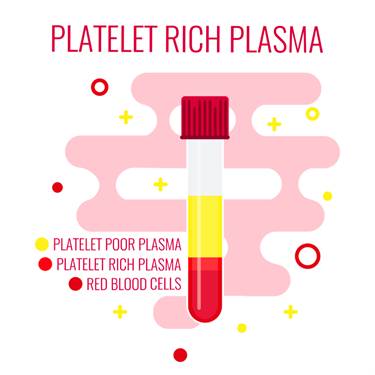
Chiropractor Chandler AZ
Is PRP Covered By Insurance?
WHAT IS PLATELET-RICH PLASMA PROLOTHERAPY?Platelet-rich plasma (PRP) Prolotherapy is a type of therapy that uses platelets for healing the injury. Platelet-rich plasma has a higher concentration of platelets than is normally found in healthy whole blood. PRP Prolotherapy use is reported in the fields of dermatology, plastic surgery, dentistry, otolaryngology, urology, ophthalmology, and neurosurgery.
In the fields of orthopedics and sports medicine, PRP Prolotherapy is being used to treat acute ligament injury (medial collateral ligament rupture of knee joint, lateral collateral ligament rupture of ankle, etc.), chronic tendon problems (rotator cuff tear, lateral epicondylitis of elbow, tendinitis around the knee joint, Achilles tendinitis, plantar fasciitis, etc.), acute muscle rupture, and facilitation of bone healing after bone graft. Experimentally, it has also been applied in intra-articular injections for osteoarthritis.
MODE OF ACTION
Platelets are small, enucleated fragments found in the blood that is an essential part of the body's homeostasis. They have a crucial role in blood coagulation, but they are also important for tissue healing. The average concentration of platelets in normal blood is 200,000 per μl.

In PRP, this concentration is increased up to 5 times the normal concentration of platelets. These platelets contain alpha granules which are storage units for growth factors. Growth factors are the proteins that initiate and accelerate the wound healing process through a complex interaction between a wide variety of growth factors and adhesive proteins factors which are responsible for the healing response, promoting the long regenerative process of cell proliferation, removal of tissue debris, angiogenesis, extracellular matrix formation, osteoid production, and collagen synthesis.
The basic philosophy of PRP Prolotherapy is that the higher concentration of growth factors in PRP Prolotherapy accelerates the repair process and heals the injury faster than the normal healing process. In PRP Prolotherapy, the injury is healed in 3 stages:
- INFLAMMATION PHASE that lasts for 2-3 days. In this phase, growth factors are released.
- PROLIFERATION PHASE that lasts for 2-4 weeks. It is vital for musculoskeletal regeneration.
- REMODELING which lasts over a year. In this phase, collagen is matured and strengthened.
PREPARATION AND APPLICATION OF PRP INJECTION

Blood is drawn from the patient and centrifuged to separate different layers of blood. The platelet-rich plasma layer is separated and injected at the injury site under an imaging technique, which is mostly ultrasound. After the injection, the patient is monitored for 30 minutes for any reaction or severe pain. If everything goes smoothly, the patient is discharged after 30 minutes. The patient may feel pain at the site of injection for the next 2-3 days. This pain can be treated with painkillers.
SIDE EFFECTS OF PRP INJECTIONPlatelet-rich plasma Prolotherapy is considered to be a safe method. As it uses the patient's own blood under sterile conditions, the chances of blood-borne disease transfer and immune reaction are eliminated. No evidence shows that PRP injections can cause cancer or tumor growth. It is an invasive method so the possible side effects can be pain, redness and soreness at the site of injection, needle breakage, nerve and muscle damage, and infection.
BENEFITS OF PRP INJECTIONThe effectiveness of PRP Prolotherapy is not fully established yet. There are people who support it and there are people who consider it as a fad and ineffective treatment option due to lack of sufficient scientific knowledge. It is also not approved by the FDA. Still, there are a number of researches that have shown the positive results of PRP injections. The first published in vitro study showed that PRP stimulated the proliferation of cells such as osteoblasts, fibroblasts, tenocytes, chondrocytes, and mesenchymal stem cells.
A research done to evaluate the effects of PRP injections showed that PRP had a positive effect on human stem cell proliferation and markedly increased cell numbers with increasing PRP concentration from 1% to 10%.
The ability of PRP to differentiate cell lines is controversial. One study showed that PRP can stimulate stem cell differentiation into osteoblast, but others had mixed results.
Several animal studies have shown promising results of PRP in bone healing. Bone healing was enhanced with respect to stronger callus formation in rabbit calvaria defects and in mandibular reconstruction in goats. According to the researchers, it was due to the positive effects of PRP on Osteoblastic differentiation.
PRP Prolotherapy has shown better results when compared with the other treatment options. A popular treatment option to relieve the pain is the use of steroids, but the drawback of local steroid injection is that it can rupture the structure of the joint. Researchers have reported a 10% increase in plantar fascial rupture rate in patients after steroid injection for heel pain. Also, steroid injections do not repair the structure while PRP repairs the structure and relieves the pain.

PRP injection cost varies depending on the location of the Prolotherapy clinics. On average, one PRP injection costs $800-$1000, sometimes more, and, on average, 4-8 injections are needed for complete repair. Thus the complete treatment cost can be up to $5000-$8000 on average, again depending on the clinic and number of injections.
INSURANCE AND REIMBURSEMENT OF PRP PROLOTHERAPYPRP Prolotherapy is an expensive treatment option. Unfortunately, most of the insurance companies do not cover for this treatment option. It is offered on a fee-for-service basis by PRP Prolotherapy clinics. The reason provided by insurance companies for not covering PRP Prolotherapy is because it is an experimental procedure and its effectiveness is not established scientifically.
The current Procedural Terminology code for PRP injection, which was implemented July 1, 2010, is 0232T (Injection[s], platelet-rich plasma, any tissue, including image guidance, harvesting, and preparation when performed). This code is a temporary code that is used for emerging technologies, services and procedures that are used to collect data which is then used by the Food and Drug Administration approval. The 0232T billing code also includes imaging guidance, harvesting, and preparation, therefore, these aspects of the procedure cannot be billed separately and the patient has to pay for the complete procedure himself.
It also emphasizes the importance of scientific evaluation of PRP Prolotherapy to gather enough data to convince insurance companies so that more people can benefit from this technique.
HOW TO GETTING PRP INJECTION INSURANCE COVERAGEDr. Maharam who is one of the most remarkable physicians in the field of sports medicine has appreciated PRP Prolotherapy for its simplicity and efficacy. But, according to his words, there is one medical community who would not want PRP Prolotherapy to become a most widely used therapy – surgeons. He wrote in his article that surgeons are concerned that the use of PRP Prolotherapy would eliminate some surgeries. Dr. Maharam also pointed out that until more insurance companies begin to cover the procedure, the only people who can be benefited from this amazing procedure will be athletes and professionals who can afford it.
To get PRP Prolotherapy insurance coverage, the following steps can be useful:
- Find the research studies that have proved the effectiveness and positive results of PRP Prolotherapy for various disease conditions
- Collect the data from the PRP Prolotherapy professionals who have worked with patients and have seen the positive results
- Approach the universities to conduct studies on PRP Prolotherapy because university studies are the most unbiased studies
- Put together cost comparisons of PRP therapy for specific injuries compared to conventional treatments for the same injury that insurance companies now cover, particularly surgery. Surgical costs are exponentially higher, so covering this therapy is beneficial not only for the patients who need it but for the insurance companies as well
- Most insurance companies cover for corticosteroid injections which are less effective than the PRP Prolotherapy. Therefore, insurance companies must be convinced that corticosteroid injections are more harmful in the long-term and can increase the damage as compared to PRP Prolotherapy which is more effective than corticosteroid injections, has fewer side-effects, and is effective in the long term
Platelet-rich plasma Prolotherapy is a very effective therapy that can help people with chronic and acute injuries and pain. But due to its cost, some people cannot afford it. Therefore, there is a dire need to have enough scientific research to convince the insurance companies to cover the treatment cost so that more people can get access to this safe treatment option.
BIBLIOGRAPHY:
Paoloni , J., De Vos , R. J., Hamilton , B., Murrell, G. A., & Orchard , J. (2011 ). Platelet-rich plasma treatment for ligament and tendon injuries. Clin J Sport Med, 37-45.
Taylor , D. W., Petrera , M., Hendry , M., & Theodoropoulos , J. S. (2011 ). A systematic review of the use of platelet-rich plasma in sports medicine as a new treatment for tendon and ligament injuries. Clin J Sport Med, 344-52.
Tiwari, M., & Bhargava, R. (2013). Platelet rich plasma therapy: A comparative effective therapy with promising results in plantar fasciitis. J Clin Orthop Trauma, 31–35.